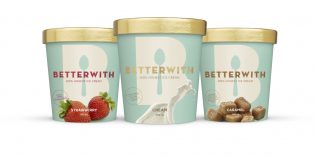Toronto brewer ready to explore lifestyle marketing
Mill St. Brewery is looking for something bigger from its new partner, Saatchi & Saatchi. The craft brewer has selected the Toronto-based shop as its new agency of record following a formal review of five undisclosed agencies.
 The appointment of Saatchi represents an evolution in Mill St.’s approach to marketing. The company launched in 2002 and has mostly created its advertising in-house with help from an independent consultant.
The appointment of Saatchi represents an evolution in Mill St.’s approach to marketing. The company launched in 2002 and has mostly created its advertising in-house with help from an independent consultant.
Awnish Srivastava, vice-president of marketing for Mill St. in Toronto, said that while most of the agencies the brewer met with had the requisite beer experience, Saatchi demonstrated a keen understanding of the craft category.
“The approach to building that kind of brand is a lot different than building a mega-beer brand – it’s a lot more rooted in local roots and craftsmanship,” said Srivastava. “It’s not about girls in short skirts partying with friends.
“What was interesting was trying to find agencies that really understood that; for us it’s important that we don’t start going down the path of trying to be the next Labatt or Molson,” he added. “Not only can we not compete with that, it’s just not what we are.”
Mill St.’s advertising has traditionally focused on the attributes of its beers, such as their distinctive taste or “hoppiness,” but Srivastava said that message is in danger of being drowned out as other entrants in the fast-growing craft beer category adopt a similar approach.
“There are so many small breweries popping up… that the messaging around ‘We make better and more distinct beer’ is becoming pretty generic,” he said. “I think we need to inject more brand personality.”
Srivastava said that beer advertising tends to fall into two camps: functional advertising that talks about a beer’s attributes, and the lifestyle advertising that is the domain of the multinationals.
“We feel we’re rooted in the product but have an opportunity to become somewhat of a trusted guide and advisor to people as they begin exploring craft beers,” he said. “We can do that by dialing up the connection with our consumers.”
While Mill St. has traditionally relied on a combination of radio and print – complemented by limited out-of-home – Srivastava said that the company is keen to explore digital initiatives, all fueled by its existing social media presence.
Mill St.’s core customer tends to skew slightly older (25-44) with a higher household income and higher education. The brand also appeals to people who are keen to explore new brands and flavours, said Srivastava.
“It used to be that people drank one brand of beer their whole life, but people are recognizing that beer can take many different shapes and forms and there’s a lot to explore out there.”
Srivastava suggested that Mill St.’s future marketing plans would place an emphasis on its Stock Ale and Tankhouse Ale. Ale is one of the fastest-growing segments in the beer industry, said Srivastava, but remains under-developed in Canada – where he estimated it accounts for less than 10% of all beer sales.
The company is also launching a new beer, Vanilla Porter – which proved popular with customers in a recent limited time offer – in the fall.
Mill St. beer has a presence in every province except Quebec, although Ontario is the company’s biggest market. The company’s rollout strategy also includes Brew Pubs featuring its products, the most recent of which opened in Ottawa.
Srivastava joined Mill St. as vice-president of marketing in April after previous stints with companies including Warner Bros., beverage alcohol marketer Maxxium JV (a distribution alliance between Beam Global Spirits & Wine and the Edrington Group) and General Mills.
“To me it was an opportunity to work with a Canadian brand that is already a success story but has an opportunity to be so much more,” he said. “We have such a great brewing heritage in this country, but unfortunately the breweries that existed before prohibition shut down and afterwards we had the big brewers that have all been bought up by foreign-owned companies.
“The opportunity to really do something that was local and Canadian, that we could control the destiny of, was pretty exciting.”










